I've used hclust to generate a cluster dendrogram of some data, but I need to isolate all the paired clusters, i.e. all the clusters that comprise just 2 pieces of data (the first ones to be clustered together), even if they might be clustered with other data on a "higher" branch. Does anyone know how I can do that?
I've highlighted the clusters I want to isolate in the attached image, hopefully that explains it better.

I'd like to be able to isolate all the paired data in those clusters in such a way to be able to compare the clusters on their contents. For example to see which of them contain a particular type of data.
